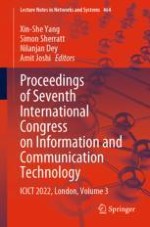This book gathers selected high-quality research papers presented at the Seventh International Congress on Information and Communication Technology, held at Brunel University, London, on February 21–24, 2022. It discusses emerging topics pertaining to information and communication technology (ICT) for managerial applications, e-governance, e-agriculture, e-education and computing technologies, the Internet of Things (IoT) and e-mining. Written by respected experts and researchers working on ICT, the book offers a valuable asset for young researchers involved in advanced studies. The work is presented in four volumes.
